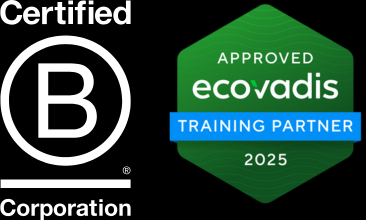The CSRD and ESRS are changing how companies report on sustainability. While the EU Omnibus package may have delayed some requirements, the overall direction is clear: expectations are rising, and the first reports are already setting the standard for what credible, decision-useful ESG reporting looks like.
At Flagship, we’ve reviewed insights from early CSRD reports - drawing on published analyses, industry examples, and hands-on client work. Our goal: to identify where companies are focusing their efforts, how they’re interpreting the standards, and what others can learn before their own reporting deadlines arrive.
CSRD Reporting: What Have We Learned So Far?
Report Length: Robust but Familiar
The average CSRD-aligned Sustainability Statement is around 100 pages. This closely mirrors pre-CSRD reporting - suggesting companies are expanding thoughtfully rather than inflating disclosures.
Most firms report against 6 - 7 of the 10 topical ESRS standards, showing a strategic approach to materiality over completeness.
Flagship’s advice: Use this first year to define a clear reporting structure and data hierarchy. Keep the report concise and strategic by prioritising what matters most to stakeholders, while avoiding overly detailed but low-value disclosures.
Most Commonly Reported Topics: E1, S1, G1
Three standards dominate across nearly all reports:
- Climate Change (E1)
- Own Workforce (S1)
- Business Conduct (G1)
These areas also show the greatest maturity in governance structures, metrics, and target setting.
Flagship’s advice: Build strong narratives around these topics to showcase credible, future-focused strategies. Go beyond data by linking climate, workforce, and governance actions directly to business value and competitive advantage.
Underreported Topics: A Strategic Gap
The least disclosed standards include:
- Affected Communities (S3)
- Water & Marine (E3)
- Biodiversity & Ecosystems (E4)
For sectors like energy, construction, pharmaceuticals, food and chemicals, this represents a chance to lead where others lag - especially as stakeholder pressure rises.
Flagship’s advice: Don’t wait for these topics to become mandatory. By addressing underreported areas early, companies can differentiate themselves and build stakeholder trust before these standards become industry norms.
Material IROs: Volume Varies, But Strategy Matters
On average, companies disclose 30 - 45 material Impacts, Risks and Opportunities (IROs), with some reporting as few as 9, others over 130.
There’s an approximate ratio of 1 IRO per 3 pages of reporting. However, quality outweighs quantity. The best reports feature IROs that are precise, business-relevant, and clearly linked to financial and sustainability goals.
Flagship’s advice: Avoid generic lists. Keep IROs focused, specific, and reviewed regularly. Align them with your strategic priorities and stakeholder expectations.
Risk > Opportunity: A Tilt That Needs Balancing
In general, negative impacts account for around 40% of IROs, while opportunities are just around 10%. This reveals a risk-centric approach that may undermine forward-looking strategy.
The strongest reporters strike a balance - using IROs not only to flag exposures, but to highlight innovation, efficiency gains, and stakeholder value creation.
Flagship’s advice: Reframe IROs to showcase opportunities and business value. Demonstrating how sustainability drives growth, resilience, and innovation will resonate with both investors and customers - and will create a business case.
How Are Companies Structuring Their Reports?
- 95% of companies follow the ESRS structure, ensuring consistency and auditability
- Most embed the Sustainability Statement before the financial section of the management report
- Many use ESRS-specific terminology (e.g. E1, S1, G1), which is helpful in year one, but will likely evolve toward more integrated language over time
Flagship’s advice: Use this structured approach as a framework for internal alignment. Companies that integrate ESG data seamlessly into business performance narratives will stand out to investors and stakeholders.
Assurance: Significant Effort, Mixed Value
Nearly 90% of first-wave reports received limited assurance, with only 0.5% achieving full reasonable assurance. Assurance typically consumes ~20% of the financial audit budget.
This raises questions about proportionality - especially for companies in their first reporting cycle.
Flagship’s advice: Build assurance-readiness from day one. Streamline data systems and documentation early to reduce costs and stress in year two - allowing more of the ESG budget to support actions with real business and stakeholder impact.
Final Word
The CSRD is not just a checklist - it’s a mirror. It reflects how well your company understands its risks, its opportunities, and its role in shaping a sustainable future.
For companies, the real question is no longer “Are we compliant?” but “Are we credible?”
📩 Whether you're preparing your first CSRD report or refining your second, now is the time to turn compliance into competitive advantage. Let’s do it together.
Sources:
- Datamaran – Inside the First 300 CSRD Reports: Key Takeaways
- EY – CSRD Barometer 2025
- KPMG – Real-Time ESRS Talkbook


